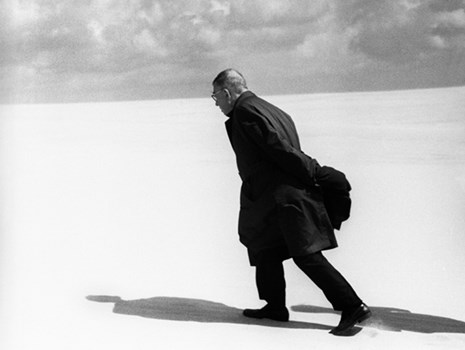The philosopher and writer Jean-Paul Sartre and the feminist writer Simone de Beauvoir visited Lithuania in June 1965. These two famous French intellectuals were accompanied on a trip to the dunes of the Curonian Spit by a group of Lithuanian artists, including the still unknown 26-year-old photographer Antanas Sutkus. During this short visit, Sutkus took a series of memorable photographs, but one of them acts as a climax of the series. The famous picture shows the philosopher strolling defiantly across the sand dunes. Sartre's lonely figure, dressed in a dark coat, with his hands folded behind his back, embodies the very idea of Existentialism: the human struggle to find a place in the world, the belief in freedom, and moral responsibility for one's choices. The warm sand of the dunes merges with the horizon, and the philosopher, making a journey to nowhere, is accompanied by only his own and his companion's shadows. Sutkus says that the original picture also included Simone de Beauvoir, but he cut it out for the sake of the composition.
The French sculptress Roseline Granet made a bronze figure of Jean-Paul Sartre based on this compelling photograph. It stands in the courtyard of the French National Library in Paris.



